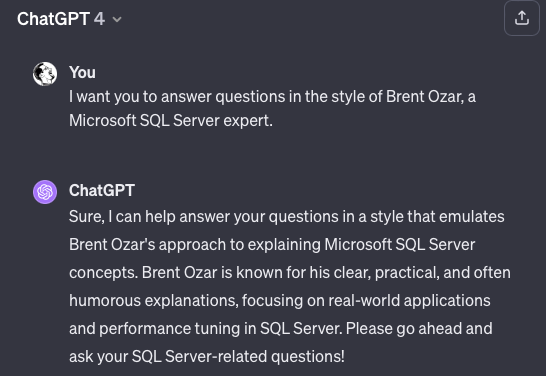New this month: more work on letting sp_Blitz run with limited permissions, nicer Markdown output, sp_BlitzLock compatibility with Managed Instances, and more.

To get the new version:
- Download the updated FirstResponderKit.zip
- Azure Data Studio users with the First Responder Kit extension:
ctrl/command+shift+p, First Responder Kit: Import. - PowerShell users: run Install-DbaFirstResponderKit from dbatools
- Get The Consultant Toolkit to quickly export the First Responder Kit results into an easy-to-share spreadsheet
Consultant Toolkit Changes
There are two changes to the spreadsheet in this release. In the “Plans Duplicated” and “Plans by Query Hash” tabs, we’ve added new columns for Compile Time MS, Compile CPU MS, and Compile Memory KB. These values are for the one specific plan you’re looking at in the row, not the total amount for that duplicated plan. It gives you a rough idea of how resource-intensive these queries are each time they run. (Thanks Erik Darling.)
If you’ve customized your query_manifest.json and/or your spreadsheet
- And you don’t want the new columns, then you can simply copy your customized query_manifest.json and/or spreadsheet over ours just like you normally do. Nothing will error out – you just won’t have the new columns.
- And you do want the new columns, then you’ll need to merge our query_manifest.json changes for queries 50 & 82, and copy the tabs “Plans Duplicated” and “Plans by Query Hash” over those tabs in your customized spreadsheet.
sp_Blitz Changes
- Enhancement: way prettier output when @OutputType = ‘markdown’. (#3401, thanks Mike Scalise.)
- Enhancement: simpler, more intuitive checks for Instant File Initialization. (#3362 and #3409, thanks Montro1981.)
- Enhancement: if we had to skip checks because you didn’t have enough permissions, we now warn you about that. (#3376, thanks Montro1981.)
- Fix: continued work on detecting msdb permissions. (#3377, thanks Montro1981.)
sp_BlitzCache Changes
- Fix: @Debug = 1 was skipping a character of the dynamic SQL. (#3406, thanks Per Scheffer and Montro1981.)
sp_BlitzIndex Changes
- Fix: @Debug = 1 was skipping a character of the dynamic SQL. (#3406, thanks Per Scheffer and Montro1981.)
- Fix: added drop-if-exists statement for temp tables to make it easier to run parts of sp_BlitzIndex ad-hoc, outside of a stored proc. (#3383, thanks Chad Baldwin.)
sp_BlitzLock Changes
- Fix: better compatibility with Azure Managed Instances. (#3392, thanks Fatima Brunson and Erik Darling.)
- Fix: won’t error out when sys.dm_exec_query_stats reports a last_execution_time of 1900-01-01. (#3385, thanks teej21012 and Erik Darling.)
sp_BlitzQueryStore Changes
- Enhancement: added @Help = 1 output. (#3388, thanks Vlad Drumea.)
sp_ineachdb Changes
- Enhancement: new @is_ag_writeable_copy parameter to only run queries against those databases. (#3399, thanks Douglas Taft.)
For Support
When you have questions about how the tools work, talk with the community in the #FirstResponderKit Slack channel. Be patient: it’s staffed by volunteers with day jobs. If it’s your first time in the community Slack, get started here.
When you find a bug or want something changed, read the contributing.md file.
When you have a question about what the scripts found, first make sure you read the “More Details” URL for any warning you find. We put a lot of work into documentation, and we wouldn’t want someone to yell at you to go read the fine manual. After that, when you’ve still got questions about how something works in SQL Server, post a question at DBA.StackExchange.com and the community (that includes me!) will help. Include exact errors and any applicable screenshots, your SQL Server version number (including the build #), and the version of the tool you’re working with.



 If your company is hiring, leave a comment. The rules:
If your company is hiring, leave a comment. The rules:

